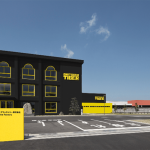By Charlie Lunan
After a strong start to the year, independent bike dealers (IBD) and bike vendors ended 2015 with a glut of some bikes that could stymie sales of Model Year 2016 bikes this spring.
As of December 10, vendor inventories of bicycles were running at about 3.5 months of sales, compared with 2.5 months a year earlier, according to data collected by the Bicycle Product Suppliers Association (BPSA), which represents suppliers of bicycles, parts, accessories and services.
The big swing in inventory can be attributed in part to a sudden fall-off in sales after a strong first half of the year, explained Michael Forte, the general manager for Felt Bicycles and chairman of the BPSA Statistics Committee.
“Inventory was pretty low at the end of last year and the good results of first and second quarter of this year and long lead times caused many manufacturers to order more aggressively,” explained Michael Forte, the general manager for Felt Bicycles who chairs the BPSA Statistics Committee. “When sales started dropping off in the third and fourth quarter, it was too late. Manufacturers had already placed their orders.”
The assessment appears to be corroborated by data from the Taiwan Bicycle Association, which estimates that its members shipped 26.3 percent more bikes worth 31.1 percent more money to the United States in the first nine months of the year.
Forte explained that vendor inventories normally run at about three months of sales, but that they fell to the unusually low level of 2.5 months in December 2014. BPSA data show road bike sales softened in the third and fourth quarter of this year and Forte said excessive segmentation in all categories is forcing vendors to take on more inventory.
“We are looking at 26-inch bikes, 27-inch, 27.5-inch, fat bikes, gravel bikes,” Forte said. “Nobody knows what to buy and the supplier needs to take the risk because the lead times are six months out there. We don’t know what to buy and in some cases we are guessing wrong.”
Reluctant Retailers
“We don’t see excessive mark downs now, but may see that later when sellers bring in their second Model Year 16 shipments next spring,” Forte continued. “Retailers seem reluctant to take inventory. Dealers are playing it very close to the vest, leaning on suppliers to warehouse bicycles.”
In Evans, GA., Chain Reaction Bicycles spent much of the summer and fall selling certain road bikes at a discount to bring inventory back onto balance, said owner Phil Cohen. While sales of $5,000-and-up road bikes remain relatively stable, sales of $1,500-to-$4,000 road bikes dropped off in the back half of the year.”
“I went into spring with high expectations and we did okay in some segments, such as in the more family-oriented recreational and urban/commuter segments,” said Cohen, whose store carries bikes from Cannondale, Haro, Santa Cruz and Bianchi. “In effort to move bikes we’ve had to reduce price and it’s been very unprofitable.”
As a 25-year veteran of the industry, Cohen has had to work through inventory gluts before. But he senses a change in the market.
“Ten or 15 years ago, if you marked a high end bike down 10 percent it evaporated,” said Cohen, who serves on the board of directors for the National Bicycle Dealers Association. “Now you could mark that same bike down 20 percent, or $800 and the customer’s response is ‘I don’t know, I’m going to look around.'”
To recover some of the lost margin in 2016, Cohen will take advantage of big discounts manufacturers are offering dealers to clear out their MY 15 road bikes.
“For MY 16 we have taken very little high-end road bike product,” Cohen said. “If there are going to be huge discounts, I’m going to be the guy buying the discounted stuff and selling it at discount and still making margin.”















